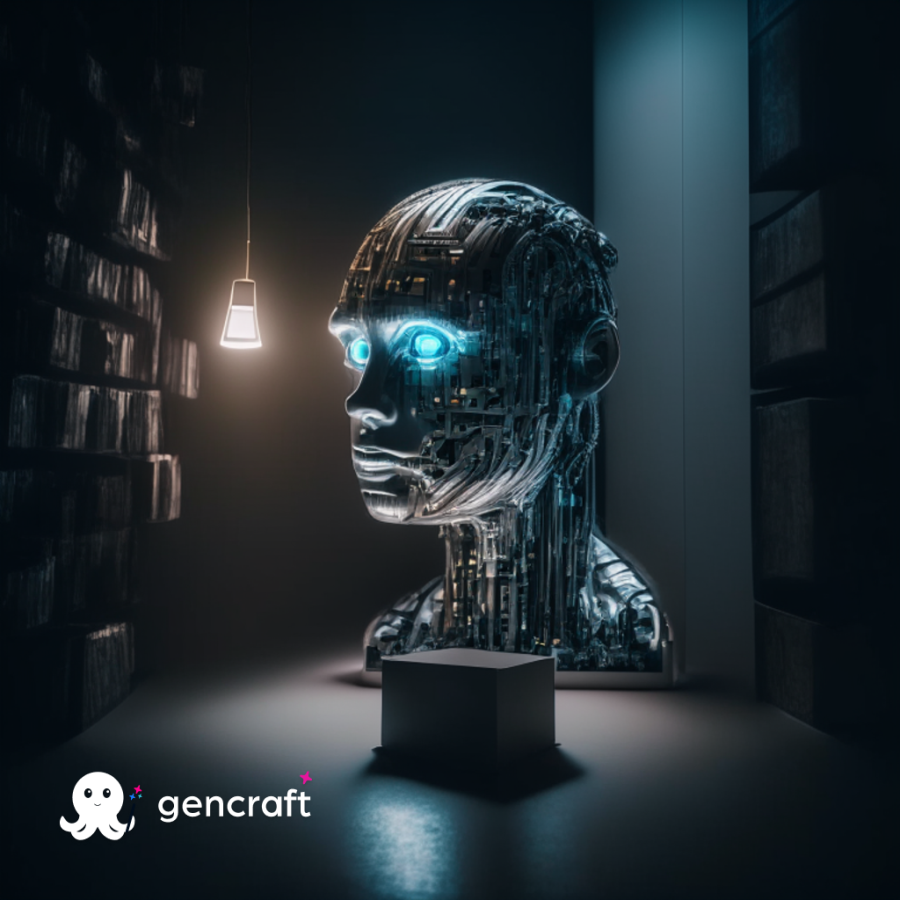The Ever-Advancing Progression of AI: Exploring the Future of Artificial Intelligence
The Art Of A.I.
Artificial Intelligence (AI) has come a long way since its inception, transforming from a mere concept into a revolutionary technology that permeates various aspects of our lives. Over the years, AI has made significant progress, fueled by breakthroughs in machine learning, deep learning, and neural networks. This article explores the remarkable progression of AI and offers insights into its future potential.
- Early Beginnings: Symbolic AI and Expert Systems
The origins of AI can be traced back to the 1950s when researchers began exploring the concept of “symbolic AI.” This approach focused on creating computer programs capable of mimicking human intelligence by processing symbols and rules. During this period, expert systems emerged, designed to replicate human decision-making in specialized domains. Although these early attempts showed promise, their limitations soon became evident, highlighting the need for more advanced techniques.
- Machine Learning: Unleashing the Power of Data
The advent of machine learning in the 1990s marked a significant turning point for AI. Machine learning algorithms enabled computers to learn from data and improve performance over time. This breakthrough led to the development of techniques like decision trees, support vector machines, and Bayesian networks, allowing AI systems to make predictions, classify data, and solve complex problems more effectively.
- Deep Learning: Unlocking Neural Networks
Deep learning, a subset of machine learning, brought about a paradigm shift in AI capabilities. It involves training artificial neural networks with multiple layers to recognize patterns and make decisions. With the availability of vast amounts of data and increased computational power, deep learning algorithms gained remarkable success in various domains, including image recognition, natural language processing, and speech synthesis. Deep learning fueled the rise of AI applications like virtual assistants, image recognition systems, and autonomous vehicles.
- Reinforcement Learning: AI Learning Through Interaction
Reinforcement learning is another key advancement that allows AI systems to learn through interaction with their environment. By using a trial-and-error approach, AI agents receive feedback in the form of rewards or penalties, enabling them to improve their decision-making capabilities. Reinforcement learning has shown impressive results in areas such as robotics, game playing (e.g., AlphaGo), and autonomous systems, where AI agents learn optimal strategies by continuously interacting with their surroundings.
- Natural Language Processing: AI Communicating with Humans
Natural Language Processing (NLP) has been a significant focus in AI research, aiming to enable computers to understand and generate human language. NLP techniques, such as sentiment analysis, language translation, and text summarization, have revolutionized communication between humans and machines. Virtual assistants like Siri, Alexa, and Google Assistant have become commonplace, utilizing NLP to understand and respond to user queries, making human-machine interactions more intuitive and seamless.
The Future of AI: A World of Possibilities
As AI continues to evolve, its future holds immense potential across multiple domains:
- Healthcare: AI can assist in diagnosis, drug discovery, and personalized medicine, revolutionizing healthcare delivery.
- Automation and Robotics: AI-powered automation can streamline processes, enhance productivity, and drive advancements in robotics.
- Autonomous Vehicles: AI algorithms will enable self-driving cars to navigate safely, reducing accidents and transforming transportation.
- Finance: AI-powered algorithms can analyze vast amounts of financial data to make more accurate predictions, aiding in investment decisions and risk assessment.
- Education: AI has the potential to personalize education, adapting to individual learning needs and providing tailored feedback and support.
- Ethics and Governance: As AI becomes more prevalent, addressing ethical concerns, ensuring transparency, and establishing regulatory frameworks will be crucial.
Conclusion—
While only maintaining novelty status for the time being, we should continue to look at A.I. with skepticism, but we need to accept that A.I. is the future and it’s here to stay. Our place in the world is changing when computer programs are more effective than humans. We are soon to find ourselves in the same place horses did after motor vehicles became the norm, obsolete. But with that said horses now live a life of luxury and little to no work, we can only hope we’ll meet such a kind fate.
Your donation will support the student journalists of Brunswick High School. Your contribution will allow us to purchase equipment. We're a small program with little resources. Our goal is to purchase some updated, and much needed, cameras for the program.


































